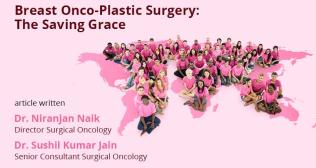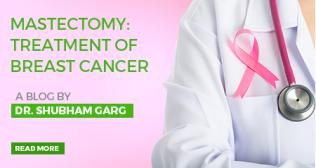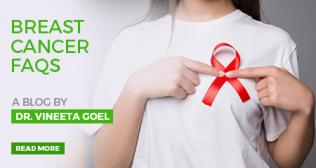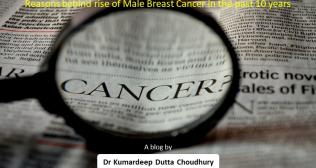
Understanding Different Types of Breast Cancer: A Complete Guide
Breast cancer is not a single disease—it is a group of conditions that develop in different parts of the breast and behave in different ways. Understanding the types of breast cancer helps patients and families make informed decisions about diagnosis, treatment, and recovery.
In this guide, we’ll explore how breast cancer is classified, what makes each type unique, and what treatment options are available. We’ll also touch on the advanced treatment approaches offered at Fortis Hospital, Shalimar Bagh, a leading centre for breast cancer treatment in Delhi.
What Is Breast Cancer?
Breast cancer begins when cells in the breast grow uncontrollably and form a lump or tumour. These cells can invade nearby tissues or spread to other parts of the body. The breast is made up of lobules (milk-producing glands), ducts (tubes that carry milk to the nipple), and connective tissue.
Most breast cancers start either in the lobules or in the ducts. The type of cancer depends on where it begins and whether it has spread beyond its original area.
Main Categories of Breast Cancer
Breast cancers are broadly classified into non-invasive (in situ) and invasive types.
1. Non-Invasive (In Situ) Breast Cancer
These are early-stage cancers where the abnormal cells remain confined to their place of origin and have not spread to surrounding tissues.
- Ductal Carcinoma In Situ (DCIS):
DCIS is one of the earliest forms of breast cancer. It starts in the milk ducts but does not invade nearby tissue. Though non-invasive, DCIS can develop into invasive cancer if left untreated. - Lobular Carcinoma In Situ (LCIS):
LCIS isn’t technically a cancer but a marker indicating higher risk. It occurs in the milk-producing lobules and signals a greater chance of developing breast cancer in either breast in the future.
Early detection of DCIS and LCIS through screening allows for prompt treatment and prevention of progression.
2. Invasive Breast Cancer
Invasive breast cancers have spread from their original site into nearby breast tissue. These are the most common types seen in patients.
- Invasive Ductal Carcinoma (IDC): This is the most common type of breast cancer, accounting for nearly 80% of all cases. IDC begins in the milk ducts and then invades the surrounding tissue.
Symptoms may include a lump, nipple discharge, or skin dimpling. With early diagnosis and modern therapies, invasive ductal carcinoma has an excellent prognosis. - Invasive Lobular Carcinoma (ILC): This type starts in the lobules and spreads to surrounding tissues. It can be more challenging to detect on mammograms, as it tends to spread in a linear pattern rather than forming a distinct lump.
ILC may cause thickening or fullness in one part of the breast rather than a noticeable lump.
Invasive Breast Cancer can further be subdivided based on hormone receptor status.
a) Triple-Negative Breast Cancer (TNBC)
Triple-negative breast cancer is one of the more aggressive forms and requires specialised treatment. It lacks three receptors—oestrogen (ER), progesterone (PR), and HER2—that are often targeted in other breast cancers.
Because of this, TNBC does not respond to hormonal or HER2-targeted therapies, making chemotherapy and newer immunotherapy options the primary treatments.
At Fortis Hospital, Shalimar Bagh, specialists provide triple-negative breast cancer treatment in Delhi using advanced chemotherapy regimens, immunotherapy, and targeted molecular therapies. Early diagnosis remains crucial for better outcomes.
b) HER2-Positive Breast Cancer
HER2 (Human Epidermal Growth Factor Receptor 2) positive breast cancers produce an excess of HER2 protein, which promotes rapid cell growth.
In the past, HER2-positive cancers were considered aggressive. However, targeted therapies such as trastuzumab and pertuzumab have significantly improved outcomes, turning this into a highly treatable condition when detected early.
Patients at Fortis Hospital, Shalimar Bagh benefit from precision oncology approaches that tailor treatment to the tumour’s HER2 status.
c) Hormone Receptor-Positive Breast Cancer
This is the most common subtype of breast cancer. The cancer cells have receptors for oestrogen (ER), progesterone (PR), or both. These hormones fuel cancer growth, and hence, hormone therapy is a highly effective treatment option.
Common treatments include:
- Tamoxifen (for pre-menopausal women)
- Aromatase inhibitors (for post-menopausal women)
These therapies block hormone effects or reduce hormone production, effectively slowing or stopping cancer progression.
Inflammatory Breast Cancer
This is a rare but fast-growing form that often does not present as a lump. Instead, the breast may appear red, swollen, and warm. The skin can look thickened or pitted (like an orange peel).
Inflammatory breast cancer requires urgent attention, typically involving a combination of chemotherapy, surgery, and radiation therapy.
Paget’s Disease of the Breast
Paget’s disease affects the skin of the nipple and the areola. It is often linked with underlying DCIS or invasive carcinoma. Patients may experience itching, burning, or flaking around the nipple.
Diagnosis is confirmed through biopsy, and treatment usually involves surgery followed by radiation.
How Doctors Identify the Type of Breast Cancer
Determining the type of breast cancer involves a combination of biopsy, imaging, and laboratory analysis. Once a tissue sample is obtained, pathologists examine it to determine:
- The origin (ductal, lobular, or other)
- Receptor status (ER, PR, and HER2)
- Grade and stage of the tumour
These factors guide doctors in designing the most effective treatment plan—an approach known as precision oncology.
Treatment Options for Different Types of Breast Cancer
At Fortis Hospital, Shalimar Bagh, breast cancer treatment is personalised according to the type, stage, and molecular characteristics of the tumour. Treatment options may include:
- Surgery – Lumpectomy or mastectomy, depending on tumour size and spread.
- Chemotherapy – Used before or after surgery to eliminate cancer cells.
- Radiation Therapy – Targets residual cancer cells in the breast or chest wall.
- Hormone Therapy – For hormone receptor-positive cancers.
- Targeted Therapy – For HER2-positive and specific molecular types.
- Immunotherapy – Particularly useful for triple-negative breast cancer.
By combining these approaches, specialists can ensure the best possible outcome with minimal side effects.
Innovations in Breast Cancer Treatment in Delhi
Delhi has become a hub for advanced cancer treatment, and Fortis Hospital, Shalimar Bagh is among the leading centres offering comprehensive care. The hospital’s Fortis Cancer Institute brings together surgical, medical, and radiation oncologists under one roof, supported by advanced diagnostic tools and precision-based therapies.
Key features include:
- Robotic and minimally invasive breast surgeries
- Day-care chemotherapy and targeted therapy units
- Access to genetic testing and next-generation sequencing (NGS)
- Personalised rehabilitation and survivorship support programmes
This integrated care model ensures that patients receive both cutting-edge treatment and compassionate support throughout their journey.
Frequently Asked Questions (FAQs)
Q1. Which is the most common type of breast cancer?
Invasive ductal carcinoma (IDC) is the most common, accounting for nearly 80% of all cases.
Q2. Is triple-negative breast cancer curable?
While TNBC can be more aggressive, many patients respond well to a combination of chemotherapy, immunotherapy, and new targeted treatments. Early detection is key.
Q3. What is the difference between invasive and non-invasive breast cancer?
Non-invasive cancers stay within the ducts or lobules, while invasive cancers spread to nearby tissues and may reach lymph nodes or other organs.
Q4. Do all types of breast cancer require surgery?
Surgery is common but not universal. Some early or metastatic cases may be managed with systemic treatments like chemotherapy, hormone therapy, or targeted therapy.
Conclusion
Every woman’s journey with breast cancer is unique—and understanding the type of cancer is the first step towards effective treatment. With advances in research and technology, breast cancer is no longer a disease without hope.
At Fortis Hospital, Shalimar Bagh, patients have access to comprehensive breast cancer treatment in Delhi, delivered by an experienced team of specialists who combine medical excellence with compassionate care.
If you or a loved one in your family has been diagnosed with breast cancer, consult our experts at Fortis Hospital, Shalimar Bagh to explore advanced, personalised treatment options.
Categories
Clear allMeet the doctor

- Oncology | Medical Oncology
-
11 Years
-
1200



















